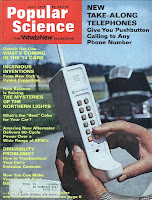When you consider current trends in information technology, cloud computing is certainly high on the list. Although, in my view, it has been around in one form or another for many years, today the cloud is having a dramatic impact on the way companies and individuals acquire the computing resources they want or need. There is a whole new industry providing everything from raw compute or storage capacity through complete business process applications. Increasingly, the cloud is being embraced and as a result there is a need to better understand how to manage it.
The Consortium was founded last year to bring together a number of individuals including business leaders, solutions providers, consultants and academics. They were formed into groups, each with the task of discussing and studying key aspects of the cloud. As one of the founding members, I have been involved in this effort from the start. The result is a body of knowledge around several key issues such as basic strategies, proper governance, the value proposition and sourcing.
These areas were examined in depth and each committee will report their key findings at the conference. They will be presented and discussed in the form of a panel comprised of some of the members. We will also hear introductory comments from Dr. Jerry Luftman, Howe School of Technology Management and a special presentation on the legal issues by Matthew Karlyn, Partner at Foley &Lardner, LLP.
 Whether choosing a productivity suite for your own use or sourcing the next key business application for your company, cloud computing is something you must now understand. The work being done at the consortium could be important in preparing you to deal with choices, costs and concerns associated with the cloud.
Whether choosing a productivity suite for your own use or sourcing the next key business application for your company, cloud computing is something you must now understand. The work being done at the consortium could be important in preparing you to deal with choices, costs and concerns associated with the cloud.As a member of the Executive Council, I strongly recommend you visit the C3 web site. There you will find more information about the organization and the conference. Become a member, participate in discussions or join one of the working groups and help contribute to the effort.
If you have the opportunity attend the conference next week. I'll be there participating in the panel on value creation and tweeting, of course, during the balance of the event.
If you are interested in the cloud but can't be there, simply take the advice below and follow me.
Captain Joe
Follow me on Twitter @JPuglisiLLC








































